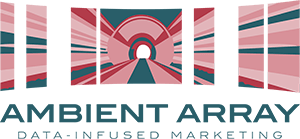The power of data and analytics has transformed marketing from an art based primarily on intuition to a science driven by insights. Organizations that effectively leverage analytics gain a competitive edge, optimizing their marketing spend while delivering more personalized experiences that resonate with their target audiences. This article explores how data-driven approaches are reshaping digital marketing strategies across industries.
Understanding Customer Behavior Through Data
The foundation of effective digital marketing lies in understanding customer behavior. Through various tracking mechanisms, marketers can now collect vast amounts of data on how customers interact with digital properties. Website analytics reveal which pages capture attention, how long visitors stay engaged, and what paths they take before converting. Social media insights demonstrate content performance and audience demographics. Email marketing metrics illustrate open rates, click-through rates, and conversion patterns.
This behavioral data creates a detailed picture of the customer journey, highlighting pain points, preferences, and moments of decision. By analyzing these patterns, marketers can identify high-value segments, understand content relevance, and recognize when and how customers prefer to engage. This knowledge allows for strategic refinements that align with actual customer behavior rather than assumed preferences.
Optimizing Campaign Performance in Real-Time
Perhaps the most revolutionary aspect of data analytics in marketing is the ability to optimize campaigns while they’re still running. Unlike traditional marketing channels that required campaigns to conclude before assessment, digital platforms offer immediate performance metrics. This real-time feedback enables marketers to make data-driven adjustments that enhance results.
A/B testing stands as a powerful methodology in this optimization process. By creating multiple versions of advertisements, landing pages, or email content, marketers can directly compare performance and determine which elements drive stronger engagement and conversions. These tests often reveal surprising insights that challenge marketing assumptions and lead to improved outcomes.
Attribution modeling represents another crucial component of campaign optimization. By analyzing how different touchpoints contribute to conversions, marketers can allocate resources more effectively across channels. This understanding prevents underinvestment in high-performing channels or overvaluation of touchpoints that appear influential but don’t significantly impact final conversion decisions.
Personalizing Customer Experiences Through Advanced Analytics
The explosion of customer data has made personalization at scale possible. Through sophisticated segmentation and machine learning algorithms, marketers can now deliver highly targeted content tailored to individual preferences, behaviors, and needs. This level of personalization extends beyond simply addressing customers by name; it encompasses recommendations based on past purchases, content aligned with demonstrated interests and offers timed to coincide with likely purchase intent.
The impact of data-driven personalization manifests across the customer lifecycle. For prospective customers, it means more relevant advertising and first-touch experiences that resonate with specific needs. For existing customers, it enables cross-selling and upselling opportunities based on comprehensive purchase history and browsing behavior. For at-risk customers, predictive analytics can identify signs of disengagement, triggering retention efforts before a customer relationship ends.
Forecasting Trends and Anticipating Market Changes
Beyond optimizing current campaigns, data analytics enables marketers to look forward, anticipating market shifts and consumer preference changes. By analyzing historical data patterns alongside external factors, predictive models can forecast seasonal trends, identify emerging market segments, and anticipate competitive challenges.
These forward-looking insights allow organizations to develop proactive rather than reactive marketing strategies. Resources can be allocated to growing opportunities before competitors recognize their potential. Content development can align with projected interest areas rather than responding after trends have peaked. Budget planning becomes more accurate when based on predictive models rather than historical averages alone.
The organizations that thrive will be those that not only collect data but transform it into actionable marketing intelligence. By understanding customers deeply, optimizing campaigns continuously, personalizing experiences effectively, and anticipating market changes proactively, data-driven marketers create sustainable competitive advantages that drive business growth.
***


